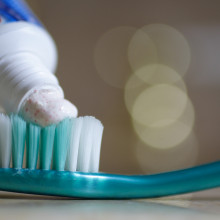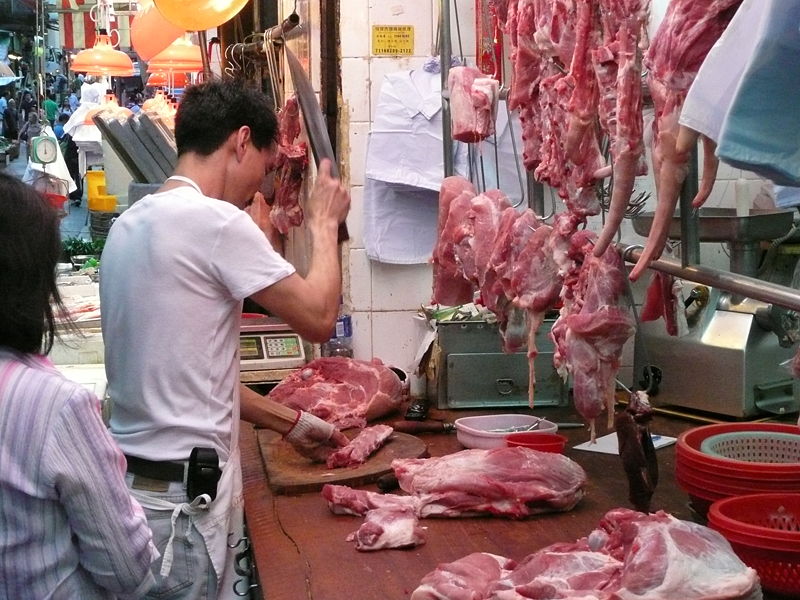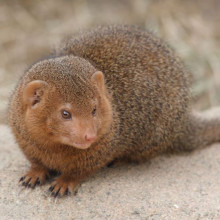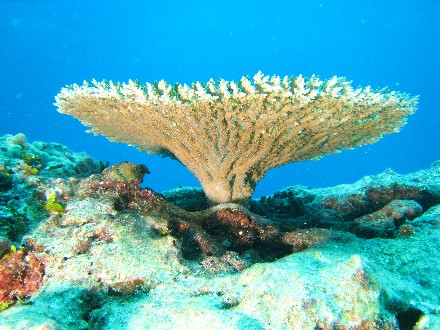How often do you clean your teeth? In this week's NewsFlash, we find out why clean teeth might mean a healthy heart. Plus, how evidence for our meat earliest meat eating ancestors coincides with a growth in brain size, mongooses learning from their elders and why transplanting coral can save a reef.
In this episode

00:20 - Caries and cardiac trouble
Caries and cardiac trouble
A large UK-based study has confirmed that not cleaning your teeth is a significant risk factor for having a heart attack.
 Writing in the British Medical Journal, UCL researcher Richard Watt and his colleagues followed the fortunes (or not) of nearly 12,000 Scottish adults, including both men and women, who were recruited to study the link between poor oral hygiene and arterial disease. After 8 years of follow up and 555 heart attacks later, analysis of the results shows that, irrespective of other risk factors, poor tooth-cleaning compliance results in a 70% increase in risk of suffering a coronary.
Writing in the British Medical Journal, UCL researcher Richard Watt and his colleagues followed the fortunes (or not) of nearly 12,000 Scottish adults, including both men and women, who were recruited to study the link between poor oral hygiene and arterial disease. After 8 years of follow up and 555 heart attacks later, analysis of the results shows that, irrespective of other risk factors, poor tooth-cleaning compliance results in a 70% increase in risk of suffering a coronary.
People who brushed less than twice a day, the team found, were 1.7 times more likely to have an arterial "event" than their more hygiene-conscious counterparts, a risk equivalent in scale to being diagnosed with high blood pressure.
Chronic low-grade gum and peridontal inflammation is believed to be the "root" cause, which accelerates the process of arterial injury and blockage. And although the link between oral hygiene and heart attacks had been made previously, most of the studies that have been carried out in the past have involv d identally-diagnosed periodontal (gum) disease.
What this study shows is that the answer to the question, "how often do you brush your teeth?" can be used as a simple to administer yet highly significant predictor of heart disease during routine screening by medical practitioners.

03:59 - Human ancestors gave up vegetarian diet 2 million years ago
Human ancestors gave up vegetarian diet 2 million years ago
New archaeological evidence suggests human ancestors gave up their vegetarian diet and began feasting on land and aquatic animals 2 million years ago, perhaps boosting their brain size in the process.
Butchered remains of crocodiles, turtles, and fish were found by David Braun from the University of Cape Town in South Africa and his team who excavated the Koobi fora formation in northern Kenya.
 The findings, published in the journal PNAS, provide some of the earliest evidence for meat-eating among human ancestors.
The findings, published in the journal PNAS, provide some of the earliest evidence for meat-eating among human ancestors.
Cut marks on the fossilized bones, and evidence for bone marrow extraction, support theories it was stone tool-wielding humans that ate these animals and not other predatory animals.
No hominin bones were found in the formation so we can't be sure who the butchers were, judging by the timing it could have been Homo habilis or perhaps late australopithecines.
Aquatic species are especially rich in docosahexaenoic acid, a form of omega 3 fatty acid that is critical in human brain growth. It is possible that a diet rich in omega 3 could have played a role in the rapid development of brain size - that essential human characteristic. But for now we don't know if the world's first butchers were eating crocodiles and fish as part of a staple diet, or an occasional meaty treat.

06:32 - Animal instinct, or tradition?
Animal instinct, or tradition?
Animals pass-on practical knowledge and learning to their counterparts, researchers have proved this week.
 Amongst humans, we routinely talk about traditions passing down through the generations. But scientists usually assume that the majority of animal species are incapable of such a feat. With a few rare exceptions seen amongst certain marine mammals and other primates, the apparent transmission of specific skills or behaviours amongst simpler animals is usually labelled as "instinctive". But Exeter University researchers Corsin Muller and Michael Cant, who have been monitoring mongooses in Africa, have found that these small carnivores definitely influence their descendents with the fruits of their wisdom.
Amongst humans, we routinely talk about traditions passing down through the generations. But scientists usually assume that the majority of animal species are incapable of such a feat. With a few rare exceptions seen amongst certain marine mammals and other primates, the apparent transmission of specific skills or behaviours amongst simpler animals is usually labelled as "instinctive". But Exeter University researchers Corsin Muller and Michael Cant, who have been monitoring mongooses in Africa, have found that these small carnivores definitely influence their descendents with the fruits of their wisdom.
Mongooses make attractive study subjects for this kind of work because they are highly social animals that live in groups within which young pups pair up with older unrelated "escorts" whose job it is to show them the ropes for their first few months of life. They also have two separate strategies for opening up tough food morsels such as nuts or creatures that live in hard shells: they either gnaw holes in them or throw them at something hard until they break; but each animal tends to favour one of the two techniques.
To find out why, the researchers made modified "Kinder" surprise eggs containing a tasty fish and rice treat and initially filmed the escorts as they attempted to crack into them. Once they'd identified the escorts as "hurlers", "biters" or "both" they then began to present the treats to the escorts in front of their oung mongoose proteges, who watched as they opened them up to obtain the food. As a control, one group of animals were presented with already-open treats.
After the youngsters had observed their escorts opening treats ten times, the researchers then tested the young animals themselves with their own "Kinder" eggs. The strategy they used, the Muller and Cant found, tended to be the one they'd watched their escort use. But the "controls" that had watched their escorts eat from alre dy-open eggs favoured neither technique, indicating that they weren't just copying their escorts general behaviour. This, say the researchers, shows that the animals can clearly learn off each other, enabling them to transmit survival tips and techniques generationally...
10:24 - Transplanted corals could save reefs
Transplanted corals could save reefs
Transplanting coral fragments broken off by storms could be a simple, cheap, and effective way of restoring small areas of damaged reef.
The equivalent on land would be if twigs broken off trees during a storm could be stuck in the ground and left to sprout into new trees.
 A team of researchers led by Graham Forrester from the University of Rhode Island in the US have published a study in the journal Restoration Ecology that assesses how well coral transplantation works to help healthy reefs grow back.
A team of researchers led by Graham Forrester from the University of Rhode Island in the US have published a study in the journal Restoration Ecology that assesses how well coral transplantation works to help healthy reefs grow back.
White Bay in the British Virgin Islands in the Caribbean was the study site and threatened elkhorn coral - Acropora palmata - was the focus species, which as its name suggests, grows in a branching form like deer antlers and get easily damaged by storms.
The research team, with the help of students and local residents, dived down and picked up living coral fragments after a storm, then took them to another site where elkhorn corals had been wiped out by a deadly disease in the 80s and 90s - as they have across much of the Caribbean region.
Fragments were fixed in place using underwater cement, epoxy resin, and plastic cable ties.
Four years later, 40% of the transplanted coral was still alive, despite them being hit by a storm and two coral bleaching events - when increased sea temperatures cause corals to loose the vital, symbiotic algae that live in their tissues. The broken coral fragments had much better survival chances when they were transplanted and fixed in place, compared to fragments left lying on the seabed.
Crucially, the transplanted corals had grown large enough to become sexually mature, so these new reefs should be able to start seeding other nearby reefs with larvae.
This method is straightforward and cheap, but it is nevertheless labour intensive and not a viable option for large areas of reef - imagine trying to replant the Great Barrier Reef. But it certainly offers an option for boosting reef health on a local scale making them more resilient to the bigger, global problems reefs face including climate change, pollution, and overfishing.
Related Content
- Previous Can genes carry our memories?
- Next Creatures in Colonies










Comments
Add a comment